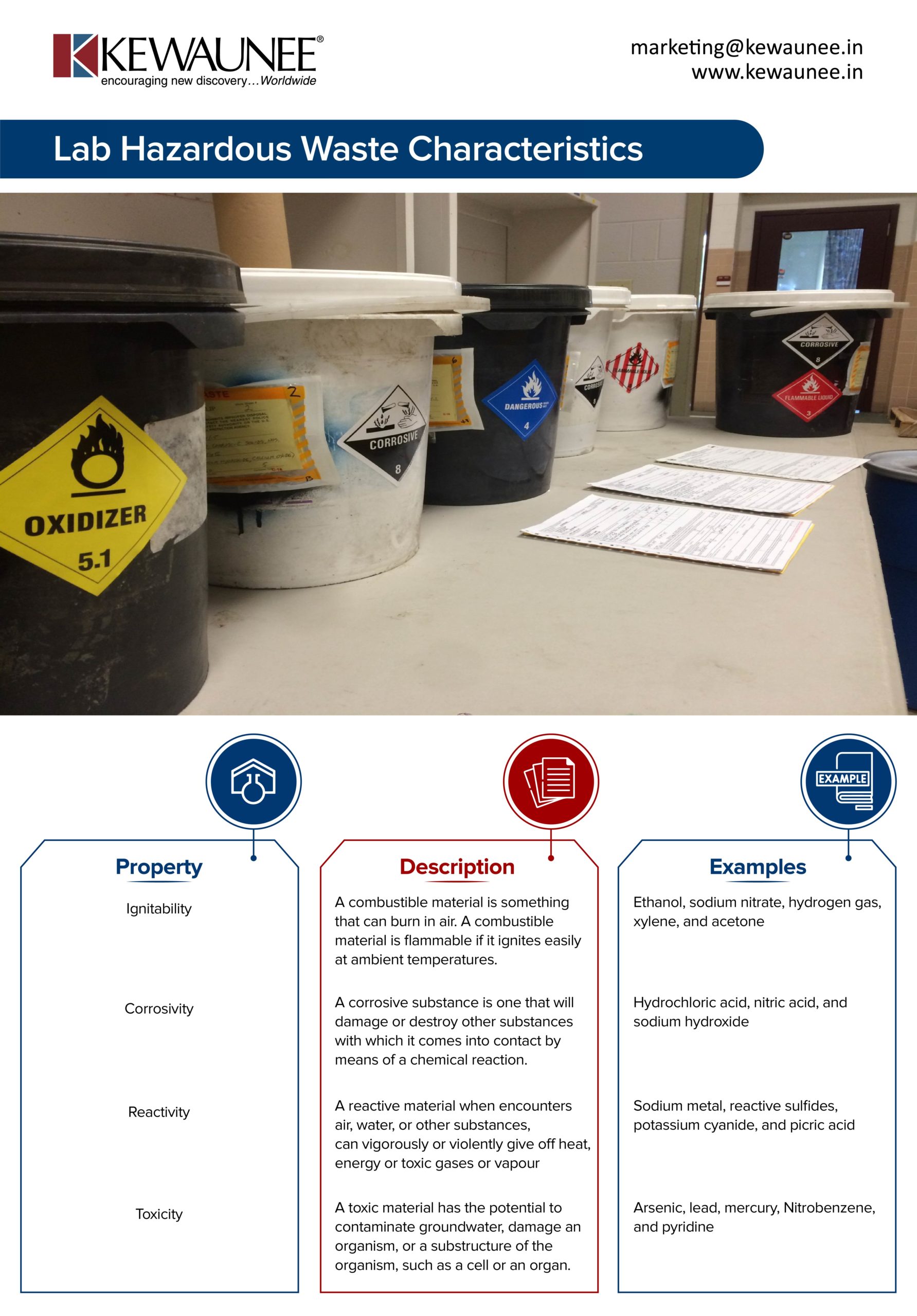Lab Hazardous Waste Characteristics
Waste from laboratories can be hazardous. The lab waste has properties or characteristics which make them dangerous and potentially harmful to the people and the environment. The hazardous wastes from the laboratories can be liquids, solids, contained gases, or sludges.
Unlike common waste, the hazardous waste from labs cannot be disposed of like we do in our everyday lives.
Depending on the properties or characteristics of waste, special treatment and solidification process might be required.
The four properties or characteristics of hazardous waste are Ignitability, Corrosivity, Reactivity, and Toxicity.
| Ignitability | A combustible material is something that can burn in air. A combustible material is flammable if it ignites easily at ambient temperatures. | Ethanol, sodium nitrate, hydrogen gas, xylene, and acetone |
| Corrosivity | A corrosive substance is one that will damage or destroy other substances with which it comes into contact by means of a chemical reaction. | Hydrochloric acid, nitric acid, and sodium hydroxide |
| Reactivity | A reactive material when encounters air, water, or other substances, can vigorously or violently give off heat, energy or toxic gases or vapours. | Sodium metal, reactive sulfides, potassium cyanide, and picric acid |
| Toxicity | A toxic material has the potential to contaminate groundwater, damage an organism, or a substructure of the organism, such as a cell or an organ. | Arsenic, lead, mercury, Nitrobenzene, and pyridine |
Comments are closed.











